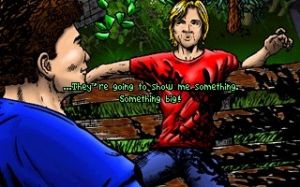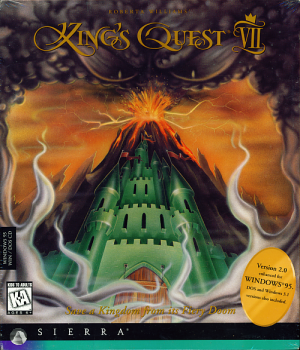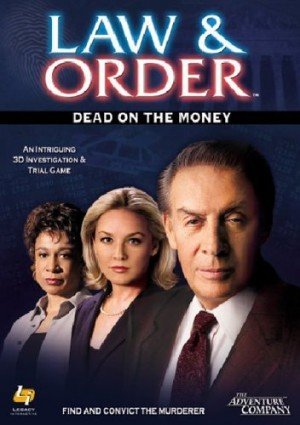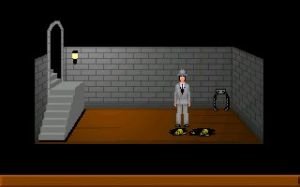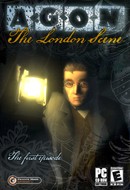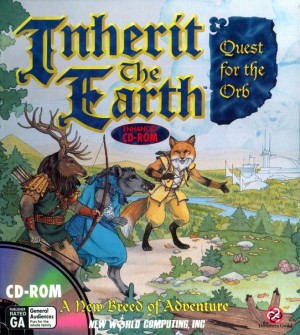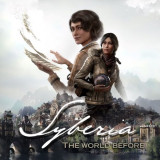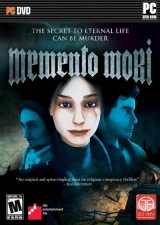Review for Prodigal
For Jacob, it started with a call from his brother, Mike. The brother he hadn’t seen for two years, ever since the accident that killed their parents. The brother that disappeared with most of the inheritance. He’s recently fallen in with a religious order, an order that can do amazing things, but now he’s scared. Giving Jacob a mysterious amulet, the Aegis, he asks Jacob to follow him should anything happen. Then his car is found abandoned by the road. The ties of family still too strong, Jacob goes in search of him. He may soon wish he hadn’t.
Thus begins Prodigal, and it immediately sets out to justify its hefty 45.9 MB download size by laying out this backstory in an astounding seven minute opening video that serves as a showcase of highly detailed graphics and ambient sound effects. The game itself starts with Jacob following a light in the forest near where the car was found.
The interface will be familiar to veterans of AGS games but is nicely explained in the fully illustrated manual that comes with the file. As is often the case, the icons and menu bar have been customised for this game. The menu bar is heavily blood-spattered, which should serve to reinforce the opening warning that this is a horror game with gory elements. Two welcome touches in the icon customisation should be noted. Firstly, all the icons include a clear focus point, which means that unlike many other games, you always know where you are pointing. The second issue is solely aesthetic. The action icons include miniature representations of the main character. When he changes outfit later in the game, the icons change outfit to match.
The high quality backgrounds first depicted in the opening video are maintained throughout Prodigal. The more detailed comic style for character close-ups is also continued but used more sparingly, reserved solely for important points in the narrative. The background detail does tend to highlight the lesser detail of the character animations, but the use of shadow creates the impression of 3D characters better than many Underground games. The difference is only really glaring when you undertake certain actions, where the lack of convincing animation makes a stark contrast to the rest of the graphics.
A few simple steps through the forest end up with Jacob locked in a strange cabin, and it is here that the horror element really starts to kick in. The walls are bloodstained, eyes flash in the dark and the background sound takes on an oppressive repeating tone. Sadly, this also marks the appearance of the first of the game’s flaws. A short way down the hallway there is a bedroom door. Walking to the door hotspot results in you stopping at the doorway. Trying to “use” the doorway elicits “Just walk there”. To walk into the bedroom you actually have to click on the neighbouring walls, a separately identified hotspot. This is a recurring problem throughout the game that is made worse when exits are less clearly identifiable. The cabin is also crammed with irrelevant hotspots. At first it felt a nice change from the all-too-common problem of only game-relevant items being interactive, but with so many resulting in somewhat lacklustre descriptions, this soon wore thin.
The puzzles are also a mixed bunch. A lot are good, solid adventuring fare involving logical thought and clever item combination. In the opening section, you have to apply classic inventory ingenuity to construct a vital tool from the less-than-perfect components at hand. Later, dealing with an unfriendly cult guard who won’t let you nearer than a half a room away involves you approaching the problem from, shall we say, a different direction. With one odd exception, the game also manages to avoid pixel hunting, as any really small items you need to find are either easy to spot or part of a larger item.
However, too many puzzles seem to be there solely for their own sake. For example, at one point a lift breaks down halfway down a shaft, conveniently next to a cave containing all you need to start it again in puzzle form. Some of the puzzles also seem needlessly obscure. I consulted the walkthrough that comes with the game twice. The first time, the lone pixel hunt I mentioned, was when the only clue to finding an object with a metal detector described so large an area I was sure I’d missed a second clue (I hadn’t, and even the walkthrough wasn’t entirely clear in describing the precise search location). The second time, an indentation in a pedestal led me to look for an object that I could never obtain.
The overall story arc of the game is quite well constructed, with an intriguing concept that pays off in the ending. As things become progressively more horrific, you get a real feeling that the protagonist is a man genuinely prepared to go through hell for his own flesh and blood. The horror theme manages to hold for most of the first part of the game, with good use of uncomfortable background sounds (was that something sneaking up on me?), nice background animations suggesting things lurking in the dark and some well-spaced blatant scares. This comes to a grinding halt once you catch up with the cult you're pursuing. Suitably disguised, you then have a series of conversations that are variants on “So what is it you............er, I mean we do?” Bizarrely, none of the cult denounce you as an interloper, choosing instead to send you on a series of fetch quests. It’s hard to feel unnerved when you’re searching for the ingredients to a barbecue chicken recipe. The horror feel re-establishes itself subsequently but the spell is somewhat broken.
Even some of the things intended to make the game better don’t quite come off. When left inactive, Jacob performs a series of idle moves, such as looking around and scratching one leg with the other. This looks great until you realise he does it any time he’s not moving around. This means he also does it during conversations and whilst facing hideous monstrosities, making it highly unconvincing. The game also includes a fast-walk feature utilised by pressing the middle mouse button. Given the size of some areas this is a great boon. Unfortunately, it only works if Jacob is already moving, meaning you have to start him walking before you can use it.
Much of what I’m describing could well be considered simple niggles that shouldn’t affect a good game, and to a certain extent this is true. The problem I found was that every time the game started to suck me in, one of these niggles would rear its ugly head to spoil the atmosphere or break the immersion. Were it just one thing, you could accept the issue and thereafter ignore each time it came up, but a multitude of niggles disturbing you in different ways are harder to get past.
I’d really like to unreservedly recommend Prodigal, as in a way it is the game's highs that serve to make the flaws all the more glaring. However, it feels like its makers were so busy coming up with more things they could put in that they didn’t take time to step back and see if they all worked, and those deficiencies will no doubt serve to deter some gamers. If you think you can look past the flaws I’ve mentioned, then this is a very worthwhile investment of a few hours of your time. The ending, which you will need to wait through the last of the credits to fully appreciate, truly sent a chill down my spine. In any case, I’d still recommend keeping an eye out for future productions from Benjamin Johnson and his team. They are already working on a sequel to this game and if they can iron out the flaws of their debut effort, they may just be capable of creating a classic.
The game is available as a 45.9 MB RAR file from the Prodigal website.


